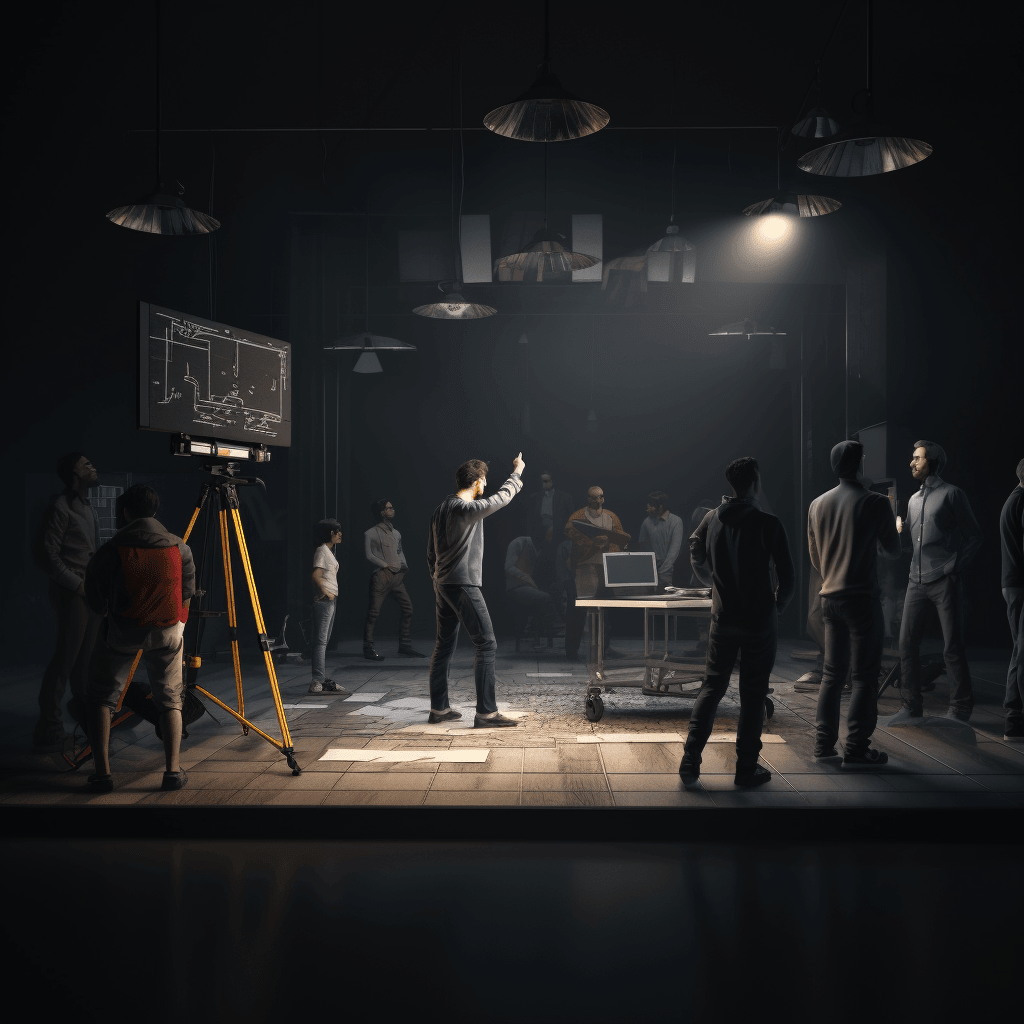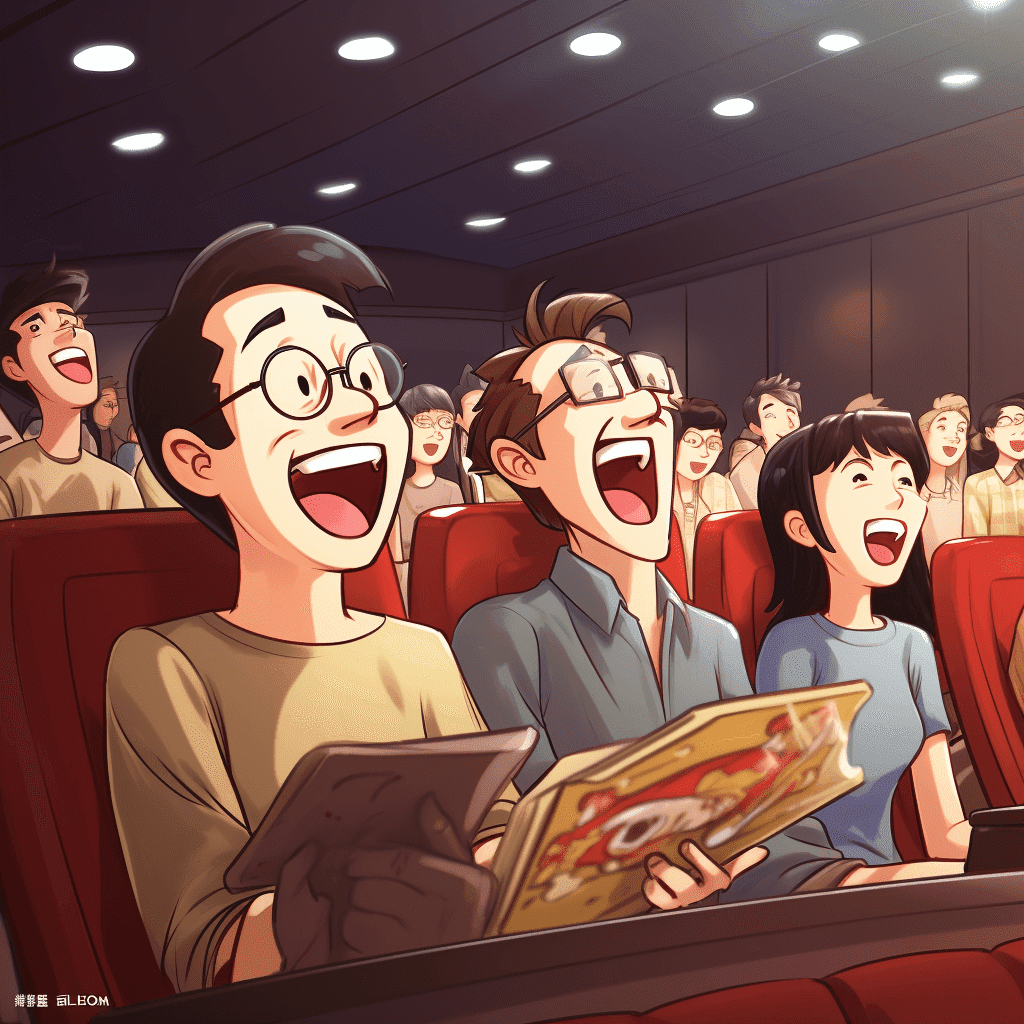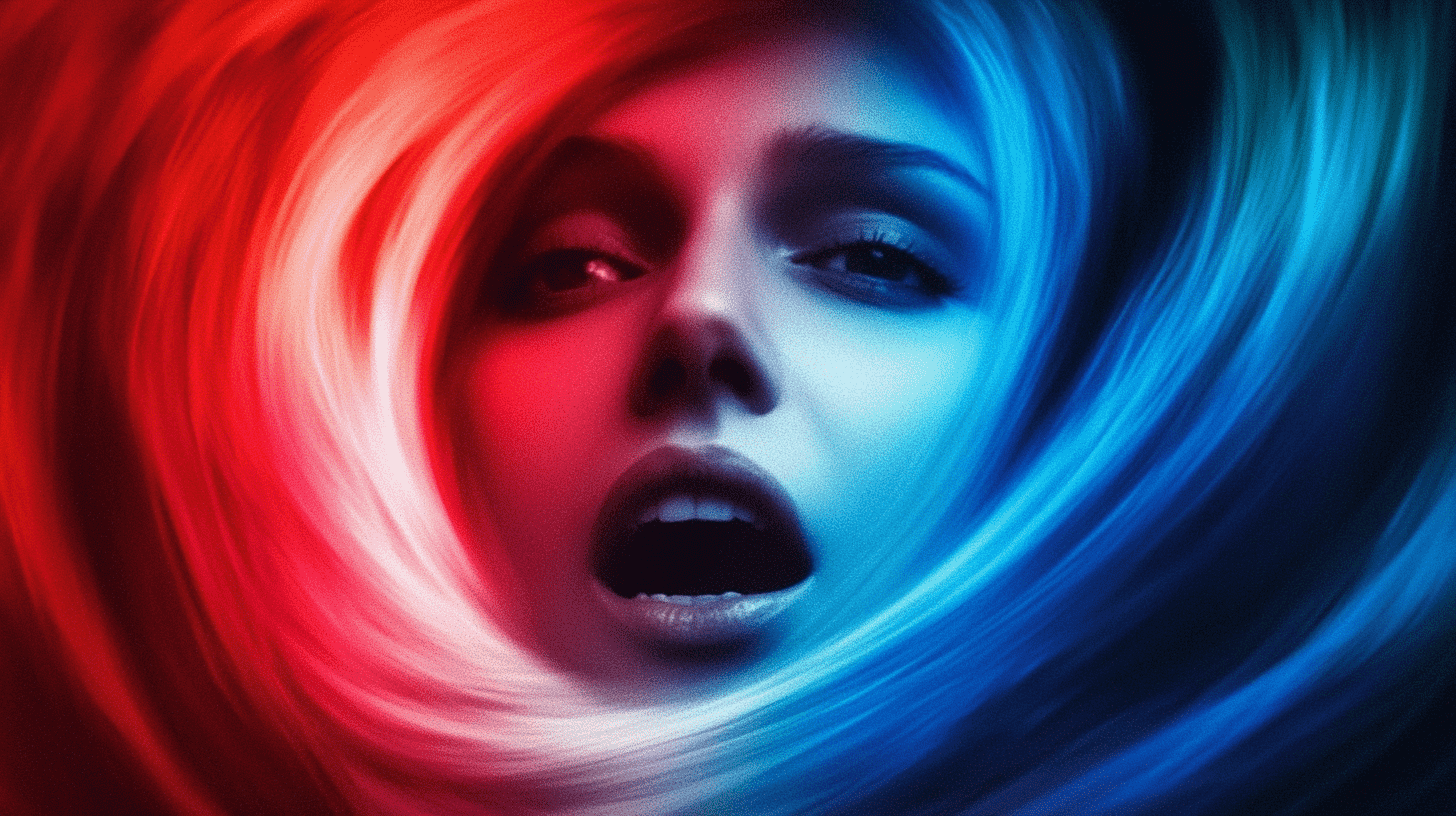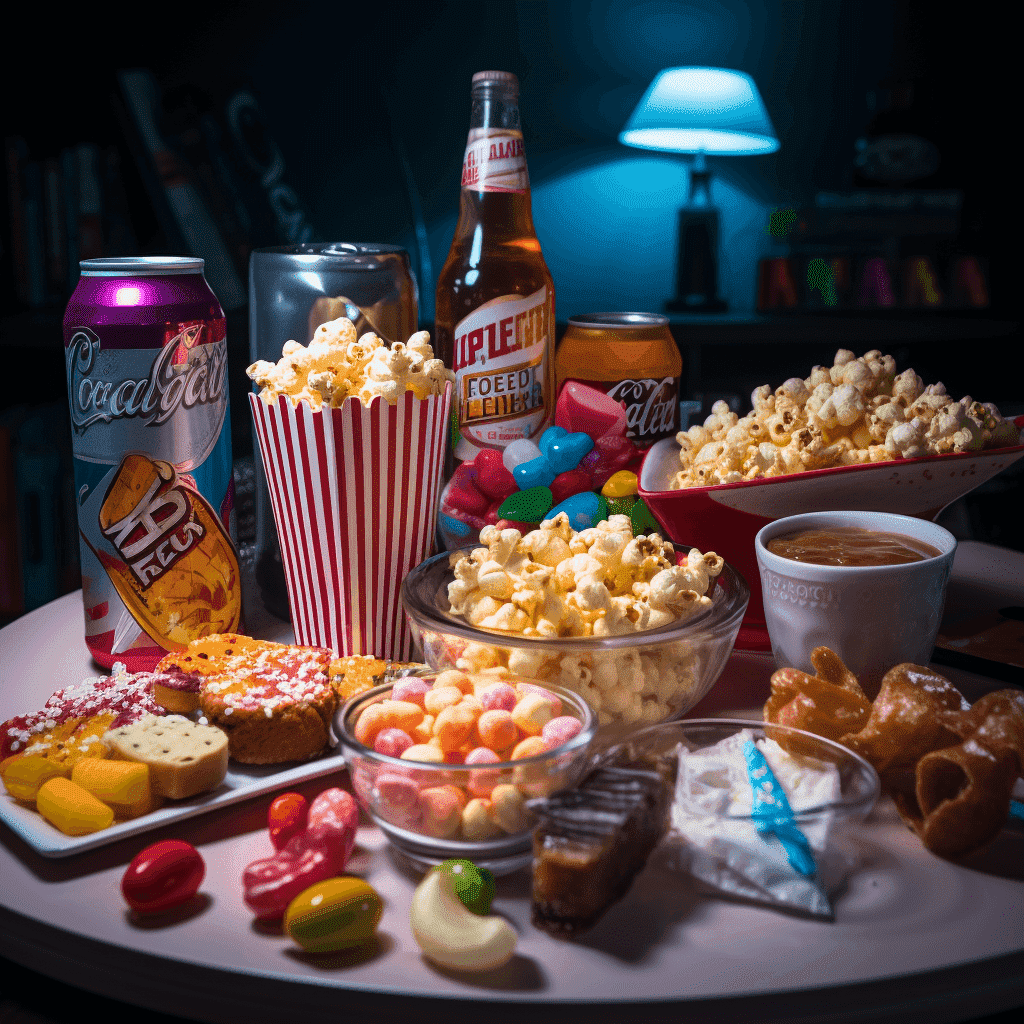Ad Blocker Detected
We use ads to keep this site running, so please consider disabling your ad blocker. Thank you!
Do not know how to disable ad blocker? Check out this article: How to disable ad blocker?
What's After the Blog?
History • Cinema
Rediscovering Classic Film Techniques in Modern Cinema
Explore how classic film techniques are being brilliantly reinvented in modern cinema, enriching storytelling and captivating audiences anew.
September 6, 2024

Movies mentioned in this article
Rediscovering Classic Film Techniques in Modern Cinema
Introduction
In an era dominated by digital technology and CGI, one might assume that classic film techniques have been relegated to the annals of cinema history. However, a closer look at contemporary filmmaking reveals a different story. Directors and cinematographers are not just paying homage to the golden age of cinema but are actively incorporating these time-honored techniques into their modern narratives. This resurgence is not just about nostalgia; it’s about recognizing the timeless value and unique storytelling capabilities that these techniques offer.
Take for example the resurgent interest in black and white cinematography. Modern films like The Lighthouse (The Lighthouse) and Roma (Roma) have embraced this monochromatic style, not just for its aesthetic appeal but for its ability to convey a certain mood and depth. Similarly, practical effects, once the only means to create visual spectacles, are making a strong comeback in films like Mad Max: Fury Road (Mad Max: Fury Road), as filmmakers seek to provide a more tactile and authentic experience to their audiences. The use of long takes, a technique that requires meticulous planning and execution, is another area where modern films are drawing inspiration from the classics. 1917 (1917), with its seemingly unbroken shot, is a prime example of this.
In this blog post, we’ll explore how these and other classic film techniques are being rediscovered and reinvented in modern cinema, adding richness and depth to contemporary storytelling.
The Magic of Black and White: A Nostalgic Aesthetic in Contemporary Films
The use of black and white in modern films is more than just a stylistic choice; it’s a deliberate effort to evoke certain emotions and themes that are often lost in the kaleidoscope of color. This monochromatic approach, reminiscent of the early days of cinema, has a unique way of stripping a story down to its bare essentials, allowing viewers to focus more on the characters, their emotions, and the narrative. The Lighthouse (The Lighthouse), directed by Robert Eggers, is a perfect example of how black and white can be used to create a claustrophobic and intense atmosphere. The film, set in a remote and stormy lighthouse, utilizes stark contrasts and deep shadows, harking back to the German Expressionist style. This choice not only enhances the film’s ominous tone but also pays tribute to a bygone era of filmmaking.
Another notable example is Alfonso Cuarón’s Roma (Roma), which uses black and white to not only evoke nostalgia but also to create a more intimate and personal narrative. The film’s visual style is a nod to the Italian Neorealism of the 1940s and 1950s, using its grayscale palette to draw attention to the social and political backdrop of 1970s Mexico.
Why do some modern movies use black and white photography?
This resurgence of black and white is not without its reasons. Filmmakers often choose this medium to:
- Emphasize textures and contrasts: Without the distraction of color, viewers are drawn to the textures and contrasts within each frame, making every scene more impactful.
- Create a timeless feel: Black and white offers a sense of timelessness, making the story feel both historical and relevant regardless of its setting.
- Focus on storytelling: This format often forces filmmakers to rely more heavily on the strength of the script, acting, and direction to convey the film’s message.
For example, The Artist (The Artist), a modern silent film shot entirely in black and white, uses this approach to recreate the magic and charm of the silent film era, while simultaneously telling a story that is engaging and emotionally resonant.
In conclusion, the use of black and white in modern films is a testament to the enduring appeal of classic cinema techniques. It’s a stylistic choice that goes beyond mere aesthetics, offering filmmakers a different lens through which they can tell their stories, and audiences a unique way to experience them.
Practical Effects: The Return to Hands-On Creativity
The resurgence of practical effects in modern cinema is a testament to filmmakers’ growing appreciation for the tangible and authentic feel that these techniques offer. In an age where CGI dominates, practical effects provide a sense of realism and immediacy that can be difficult to achieve through digital means alone. This shift is not just a nod to the past but a recognition of the unique value that practical, hands-on creativity brings to the storytelling process.
Films like Mad Max: Fury Road (Mad Max: Fury Road) stand as a monumental example of this trend. Director George Miller’s insistence on using real vehicles, stunts, and explosions resulted in a film that feels visceral and immediate. The tangible nature of the practical effects used in this film creates a level of engagement and excitement that is often diluted in purely CGI-driven movies. This approach also allowed for more dynamic and kinetic action sequences, as actors and stunt performers interacted with real elements, adding an irreplaceable layer of authenticity to the film. Christopher Nolan’s Inception (Inception) is another film that skillfully blends practical effects with CGI. The famous rotating hallway fight scene, for example, was achieved by building an actual rotating set. This not only allowed the actors to perform more convincingly but also gave the scene a physicality that would have been challenging to replicate digitally.
How are practical effects used to enhance realism in modern cinema?
Modern filmmakers use practical effects for several key reasons:
- Enhancing physical interaction: Actors can interact more realistically with their surroundings, leading to more authentic performances.
- Creating a sense of immersion: Practical effects help in building a more immersive world for the audience.
- Balancing with digital effects: When used in conjunction with CGI, practical effects can enhance the overall visual experience, grounding the more fantastical elements in reality.
For instance, Jurassic Park (Jurassic Park), despite being renowned for its groundbreaking CGI, also made extensive use of animatronics to bring its dinosaurs to life. This blend of practical and digital effects created a more believable and engaging experience for the audience.
The Art of Long Takes: Crafting Continuous Cinematic Moments
The use of long takes in modern filmmaking is a craft that requires an extraordinary level of planning, coordination, and skill. These continuous shots, often lasting several minutes, create an unbroken visual narrative that can significantly enhance the storytelling and emotional impact of a film. The resurgence of this technique is a nod to the early days of cinema, where long takes were more common due to technological limitations. However, today’s filmmakers are using them not out of necessity, but as a deliberate stylistic choice.
Sam Mendes’ 1917 (1917) is perhaps one of the most striking recent examples. The film is presented as a single continuous shot, following two soldiers on a perilous mission during World War I. This unbroken visual approach not only heightens the tension and urgency of their mission but also immerses the viewer in the characters’ experience, creating a sense of real-time involvement. Birdman (Birdman), directed by Alejandro González Iñárritu, is another film that masterfully utilizes long takes. The film creates the illusion of being one continuous shot, weaving in and out of the backstage and onstage drama of a Broadway production. This technique amplifies the chaotic and frenetic energy of the protagonist’s struggle, blurring the lines between reality and performance.
What is the impact of long takes on storytelling and viewer engagement?
Long takes impact films in several profound ways:
- Enhancing narrative flow: They create a seamless and uninterrupted flow of action, making the story more engaging.
- Building tension and realism: Continuous shots can build tension organically, as they don’t provide the viewer with a visual break.
- Showcasing technical prowess: Long takes are a display of filmmaking expertise, from the director to the camera operators and actors.
A film like Children of Men (Children of Men), directed by Alfonso Cuarón, uses long takes to create an intense and immersive experience. The long, unbroken scenes in the film, especially during its action sequences, add a level of rawness and immediacy to the story.
In summary, the art of long takes in modern cinema is not just about technical showmanship. It’s a storytelling tool that, when used effectively, can deeply engage the audience, making them a part of the narrative journey in a way that more traditional filmmaking techniques cannot.
Revival of Silent Film Elements in Modern Storytelling
The silent film era, often viewed as a primitive stage in cinema’s evolution, is finding new life in modern filmmaking. Contemporary directors are rediscovering the power of visual storytelling, where dialogue takes a backseat, and emotions and narratives are conveyed through images, music, and expressive performances. This revival is not just about mimicking the style of the past; it’s about harnessing the emotive and narrative potency that silent film techniques can offer in a sound-dominated era.
One of the most prominent examples of this is The Artist (The Artist), a film that not only replicates the aesthetic of silent films but also uses the format to tell a poignant story about the transition from silent to sound cinema. The film’s lack of dialogue and reliance on visual cues, music, and physical expressions harks back to a time when storytelling was purely visual, offering a fresh perspective to modern audiences accustomed to dialogue-heavy films. A Quiet Place (A Quiet Place), directed by John Krasinski, is another film that effectively uses silence to ramp up tension and focus the audience’s attention on the visual aspects of the story. While not a silent film in the traditional sense, its minimal use of dialogue and reliance on visual storytelling and sound design pay homage to the silent era’s techniques.
How does the revival of silent film techniques impact modern storytelling?
The incorporation of silent film elements in modern cinema offers several unique storytelling advantages:
- Enhancing emotional resonance: Reduced reliance on dialogue can heighten the emotional impact of a scene, allowing viewers to engage more deeply with the characters’ non-verbal expressions.
- Focusing on visual storytelling: It encourages filmmakers to be more creative and expressive with their visual language.
- Creating unique audience experiences: Films that utilize silent film techniques offer a distinctive viewing experience, standing out in a market saturated with sound and dialogue-driven narratives.
Films like Wall-E (Wall-E), which spends its first half largely devoid of dialogue, demonstrate how powerful visual storytelling can engage audiences in a character’s journey without spoken words.
Conclusion
The resurgence of classic film techniques in modern cinema is more than a trend; it’s a recognition of the timeless value these methods bring to storytelling. Whether it’s the expressive power of black and white photography, the authenticity of practical effects, the immersive quality of long takes, or the emotive potency of silent film elements, these techniques enrich the cinematic experience. They bridge the gap between past and present, reminding us that the core of filmmaking is storytelling, and sometimes, the old ways can speak to modern audiences in ways that cutting-edge technology cannot.
These classic techniques, once thought to be obsolete in the face of advancing technology, are proving to be invaluable tools in the filmmaker’s arsenal. They provide a link to cinema’s rich history while pushing the boundaries of modern storytelling. As we continue to explore and innovate in the world of film, it’s clear that the lessons of the past will continue to inform and inspire the cinema of the future.
Rediscover the magic of cinema with us at What’s After the Movie, where we dive deep into the world of movies, from uncovering hidden gems to exploring behind-the-scenes insights. Join us as we celebrate the art of filmmaking and the timeless techniques that continue to make it an ever-evolving and captivating art form.
Join the Conversation
We’ve explored the fascinating ways in which classic film techniques are being revitalized in modern cinema, each offering a unique flavor and depth to the stories we see on the big screen. Now, we’d love to hear from you. What are your thoughts on these resurgent techniques? Have you noticed other classic methods in recent films that caught your eye? How do these approaches impact your movie-watching experience?
Engaging with our readers is a crucial part of our journey at What’s After the Movie. Your insights and opinions not only enrich our community but also broaden our perspectives on the ever-evolving world of cinema. Whether you’re a film buff, a casual viewer, or someone with a budding interest in the art of filmmaking, your voice matters.
- Share Your Thoughts: Comment below on how you feel these classic techniques enhance or detract from modern films.
- Discuss Your Favorite Examples: Let us know about any recent films that have effectively used these classic methods, and what impact they had on you.
- Ask Questions: If you’re curious about any specific technique or film mentioned, feel free to ask. We’re here to delve deeper into the fascinating world of cinema.
Your engagement not only helps foster a vibrant community of movie enthusiasts but also inspires us to bring more insightful content to our platform. So, dive in, share your views, and be a part of our cinematic journey!
Discover More at What’s After the Movie
Thank you for joining us on this exploration of classic film techniques in modern cinema. We hope this journey has been as enlightening for you as it has been for us. If you’ve enjoyed this deep dive and are curious about more aspects of filmmaking, or simply looking for your next movie adventure, we invite you to explore further.
At What’s After the Movie, we are passionate about all things cinema. From uncovering the secrets behind end credit scenes to diving into the intricacies of film production, our platform is a treasure trove for movie enthusiasts. Here are some of the features you can enjoy:
- Extensive Movie Database: Discover films old and new, with detailed descriptions, ratings, and summaries.
- Behind-The-Scenes Insights: Learn about the filmmaking process, from directing to editing, and see how your favorite movies were brought to life.
- End Credit Scenes: Never miss out on post-credit surprises with our comprehensive guide on movies that feature these extra scenes.
Your passion for cinema is what drives us, and we strive to provide you with the most engaging and informative content. Whether you’re revisiting a classic or discovering a new favorite, ATM is your companion in the cinematic universe. So, continue your journey with us, and let’s celebrate the art of film together!
Exploring the Influence of Classic Cinematography Techniques in Modern Films
The realm of cinematography is where the magic of classic techniques truly comes to life in modern cinema. Cinematographers today are drawing on a rich heritage of visual storytelling methods, integrating them into contemporary narratives to create a unique cinematic language. This blend of old and new not only pays homage to the masters of the past but also pushes the boundaries of how stories are visually told in the present.
One of the most significant aspects of this blend is the use of lighting and composition techniques that were pioneered during the early years of cinema. Movies like La La Land (La La Land) and The Grand Budapest Hotel (The Grand Budapest Hotel) showcase the vibrant use of color and framing that harkens back to the Technicolor classics of the 1940s and 50s. These techniques are used not just for their aesthetic appeal but to enhance the narrative, setting mood, and tone, and emphasizing the emotional states of the characters.
The revival of the widescreen format, reminiscent of the epic cinemascope presentations of the 50s, is another area where classic techniques are influencing modern filmmaking. Movies like The Hateful Eight (The Hateful Eight), shot in Ultra Panavision 70, resurrect this grand visual style, offering audiences a more immersive and expansive viewing experience.
Embracing the Aesthetics of Film Grain and Texture in Digital Age
In an era where digital clarity is often prized, there is a growing appreciation for the aesthetic qualities of film grain and texture. This appreciation stems from a desire to recapture the warmth and organic feel of celluloid film. Directors like Quentin Tarantino and Christopher Nolan are known for their preference for shooting on film, as seen in Once Upon a Time in Hollywood (Once Upon a Time in Hollywood) and Dunkirk (Dunkirk), respectively. The grainy texture, inherent in these film formats, adds a level of depth and nostalgia, evoking a sense of timelessness and connecting the viewer to the history of cinema.
The Role of Sound and Music in Modern Cinema: Echoes of the Past
While the visual aspects of classic film techniques are often highlighted, the auditory elements are equally significant. The way sound and music are being used in modern cinema shows a deep understanding and appreciation of the practices developed during the early sound era of movies.
Modern filmmakers are rediscovering the art of using sound and music to enhance storytelling. Movies like Whiplash (Whiplash) and Baby Driver (Baby Driver) demonstrate how sound can be intricately woven into the narrative, becoming an essential part of the storytelling process. The synchronization of music and action in these films creates a rhythmic and immersive experience, reminiscent of the early sound films where music was often used to drive the narrative forward.
The Revival of Orchestral Scores and Classic Sound Design
There’s also a noticeable return to traditional orchestral scores in many contemporary films. This revival pays tribute to the sweeping, emotive scores of classic Hollywood, bringing a richness and depth to modern movie soundtracks. Films like Interstellar (Interstellar) and Star Wars: The Force Awakens (Star Wars: The Force Awakens) feature scores that hark back to the grand symphonic compositions of the past, using music to elevate the emotional and dramatic impact of the film.
Sound design, too, is seeing a renaissance of sorts, with modern films employing techniques reminiscent of the classic era. The use of ambient sounds, careful dialogue recording, and the integration of diegetic and non-diegetic sounds are being used to create a more immersive and authentic audio experience for the audience.
In conclusion, the influence of classic cinematography and sound techniques in modern cinema is a testament to the enduring legacy of the film’s early pioneers. These techniques, once the backbone of filmmaking, are being revisited and revitalized, offering new ways to tell stories and connect with audiences. As we continue to move forward in the cinematic landscape, these echoes of the past remind us of the foundational elements that make the art of film so powerful and evocative.
Continue reading

What's After the Movie?
Not sure whether to stay after the credits? Find out!
Check out our other apps:
Actors
Companies
Latest Movies
© 2025 What's After the Movie. All rights reserved.
























